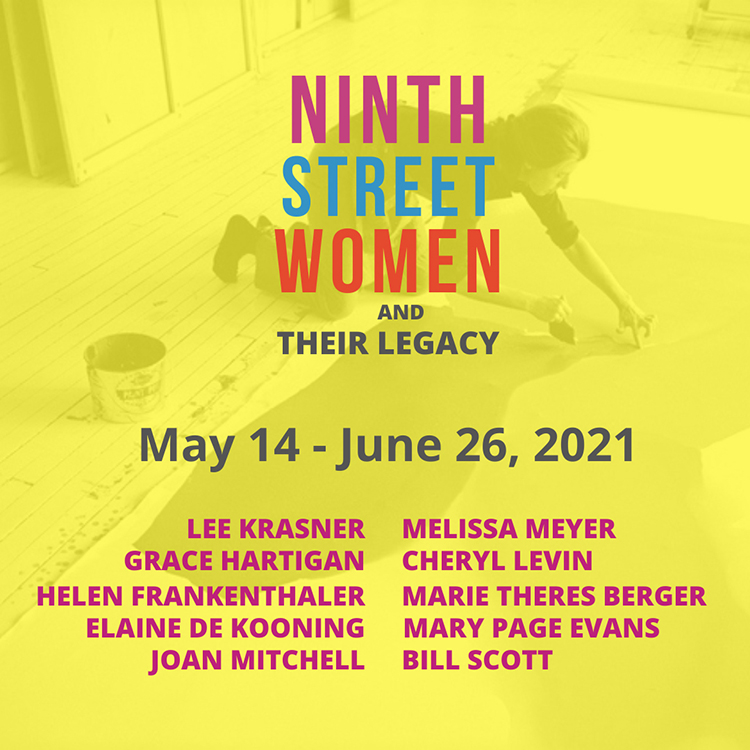Exhibition

News

About
Called a second-generation Abstract Expressionist, Grace Hartigan created work that strikes a balance between abstract and figurative. Typically her figures are boldly outlined in black, and she filled them in with blocks of coloration. Of her painting she said: “I do not wish to describe my subject matter, or to reflect upon it—I want to distill it until I have its essence. Then the rawness must be resolved into form and unity; with the ‘rage for order’ how can there be art?” (Herskovic 162)
Along with Jackson Pollock, Willem de Kooning, Franz Kline, Lee Krasner, Mark Rothko and others, Grace Hartigan is internationally recognized for carrying figurative painting into abstraction. Conscious of the lesser regard for women artists and the male-dominated abstract painting group with which she was associated, she signed her early work ‘George Hartigan’.
In 1922, Grace Hartigan was born in Newark, New Jersey to an English-Irish family. From childhood, she was unconventional and obviously very intelligent, but her parents could not afford to send her to college. She married at age seventeen and became pregnant soon after. Her husband, like her parents, recognized her talent and encouraged her to study art, which she did at night classes.
Her husband was drafted into World War II, and she attended the Newark College of Engineering, and supported herself with mechanical drafting in an airplane factory from 1942 until 1947. During this period she began studying at night with avant-garde painter Isaac Lane Muse, and for four years she took classes from him, whom she has credited with bolstering her ego by praising her talent. When Muse moved from Newark to New York City, Hartigan followed with her young son and became an active member of the group of abstract painters. She had little income and eventually sent her boy to live with his father in California.
In 1948, Hartigan first visited the studio of Jackson Pollock and was overwhelmed by the energy and innovations of his gestural painting. She became friends with Pollock and his wife Lee Krasner, and through them met other Abstract Expressionists including Franz Kline and Willem DeKooning. Hartigan spent the year of 1949 in San Miguel de Allende, Mexico.
A breakthrough for her career was in 1950 when art critics Meyer Shapiro and Clement Greenberg selected her for the “New Talent” exhibition at Kootz Gallery. The following year, she had her first solo exhibition at Tibor de Nagy Gallery.
Conscious of needing to have a style that was her own and not overly influenced by the artists with whom she was associating, Grace Hartigan decided to ‘paint her way through history’ and study the Old Masters, copy their work and utilize what she learned from those processes in her own painting. Pollock, Kline and Mark Rothko saw this as a defection from their commitment to pure abstraction, but she persisted in the face of their criticism and concluded that her paintings that truly expressed her leanings had to have “fragmentary elements from the real world” (Rubinstein 280). Titles of her work from that period include Shop Window (1955) and City Life (1956).
Her reputation grew, and in 1958, she was the only woman chosen by curators to exhibit for the Museum of Modern Art in “The New American Painting”. This exhibition traveled to eight European countries, and her sales skyrocketed, with very little from that period unsold.
In 1960, she married a research scientist from Baltimore and moved there, which caused her adjustment problems because she felt isolated from her art-world friends in New York. She began teaching at the Maryland Institute, and from 1965 to 1969 was an enthusiastic artist-in-residence teacher at the Maryland Institute Graduate School of Painting. Her painting style from that time forward combines abstraction and realism with calligraphic and other images ranging from city life figures, plants and animals, to mythological subjects.
Since Hartigan’s artistic debut in 1950 and her first solo show at the Tibor de Nagy Gallery in 1951, she achieved great success. Her work has been shown in at least 18 solo exhibitions and appeared in many group shows. Her work has been exhibited at the Metropolitan Museum if Art, the Whitney Museum of American Art and many other prestigious institutions.
Sources:
Charlotte Streifer Rubinstein, American Women Artists
Michael David Zellman, 300 Years of American Art
Marika Herskovic (Editor), American Abstract Expressionism of the 1950s
Peter Falk (Editor), Who Was Who in American Art
Exhibitions with Somerville Manning Gallery
2021 Ninth Street Women and Their Legacy
Selected Public Collections
Governor Nelson A. Rockefeller Empire State Plaza Art Collection, Albany, NY
Mennello Museum of American Art, Orlando, FL
Museum of Modern Art, New York, NY
Smithsonian American Art Museum, New York, NY
Solomon R. Guggenheim Museum, New York, NY
Figge Art Museum, Davenport, IA
Art Institute of Chicago, Chicago, IL